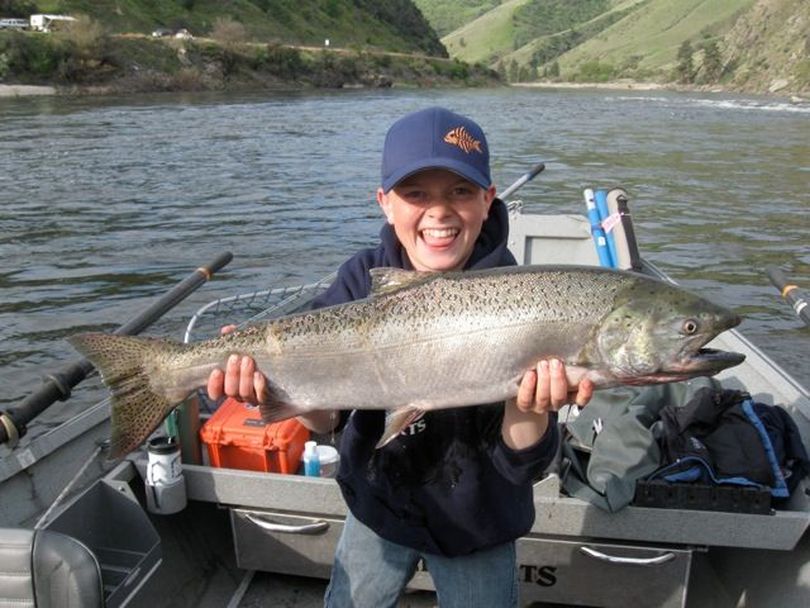Anglers clamor for a springer season near Clarkston

FISHING -- Although fisheries officials aren't making a commitment until run size is confirmed, anglers made it clear Wednesday night that they want to be able to catch spring chinook in the Snake River when they move upstream past Clarkston this year.
Biologists listed to their desires and even pointed out the possibility of a short fishing opportunity in the Grande Ronde River.
Eric Barker of the Lewiston Tribune was at the meeting. Read on for his report:
Eric Barker/Lewiston Tribune
Fisheries managers in Washington received a resounding endorsement Wednesday for a spring chinook salmon season near Clarkston.
Most of the 65 or so anglers who attended a Washington Department of Fish and Wildlife meeting at the Clarkston campus of Walla Walla Community College said they wanted the chance to fish close to home.
They also generally endorsed a bag limit of one adult spring chinook per day and didn’t object to a department proposal that would limit fishing to three days a week - likely Thursdays through Saturdays near Clarkston and Little Goose Dam and Sundays through Tuesdays near Ice Harbor and Lower Granite dams.
The department held the meeting to explain its fishing season-setting process, its proposal for the coming spring chinook season and to take public comments. The season won’t be set until after April 8, the end of the open public comment period.
The department plans to open at least three fishing areas on the lower Snake River. They are likely to be near Ice Harbor, Little Goose and Lower Granite dams. A season near Clarkston is less certain.
Despite the robust support for a Clarkston season, Glen Mendel - district fish biologist for the department at Dayton - said that decision won’t be made until later. Past fishing seasons near Clarkston have produced low harvest and scant participation. Many in attendance said poor fishing conditions explain the low harvest and effort.
Others, like fishing guide Jason Schultz of Lewiston, asked why the department doesn’t open a spring chinook season on the Snake River above Asotin where it is easier to target fish because the river is free-flowing in that location.
"That is where I want to fish," he said.
Mendel said he would "love to open the boundary waters." But the state lacks a permit from the federal government to fish for salmon any farther east than the Idaho-Washington state line at Clarkston. Schultz urged them to seek a permit.
"I don’t care how long it takes, I would like to see our managers accomplish it," he said.
When spring chinook season does open, anglers will likely be allowed to harvest about 900 chinook from the Snake River. That compares to about 1,400 chinook that can be caught between Bonneville Dam and the mouth of the Snake and 10,000 below Bonneville Dam.
There was little debate about changing the allocation so anglers on the Snake can catch more fish. It is not something the department is considering this year. But a recreation resource committee made up of anglers from up and down the Columbia River system is discussing the issue as a future possibility.
Mendel said a bag limit of one adult chinook per day and allowing fishing only three days a week would help extend the fishing season. He would like it to last about six weeks.
Fishing guide Mike Kelly, who lives near the mouth of the Grande Ronde River, said the bag limit of one adult per day is common throughout the state for spring chinook.
"People are used to it," he said. "As far as I’m concerned, leave it at one fish."
Mendel said there is a chance the department, in conjunction with fisheries officials in Oregon, will open a chinook season on a short stretch of the Grande Ronde River in July between Boggan’s Oasis in Washington and Wild Cat Creek in Oregon as a pilot fishery.
The two state’s had hoped to try it last year, but the spring chinook return was too small.
